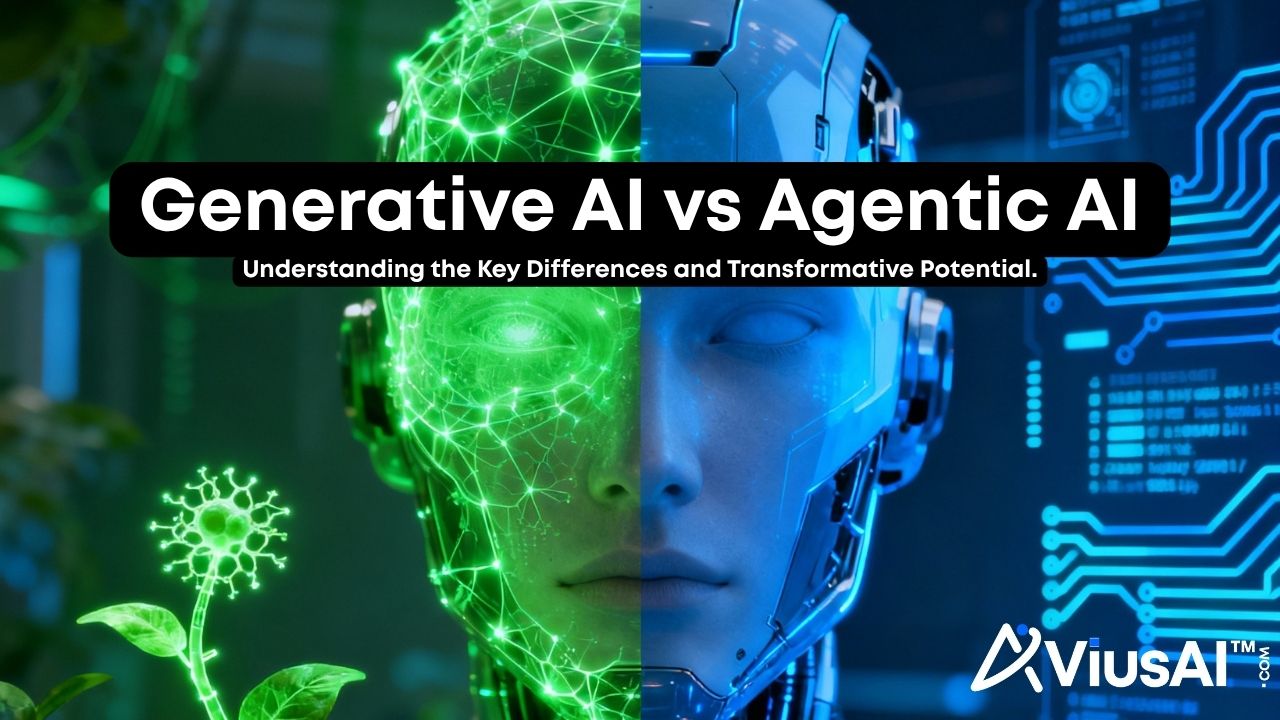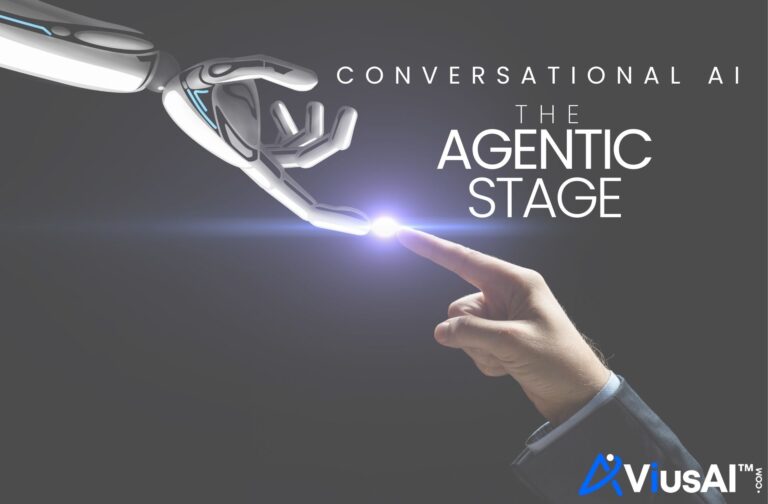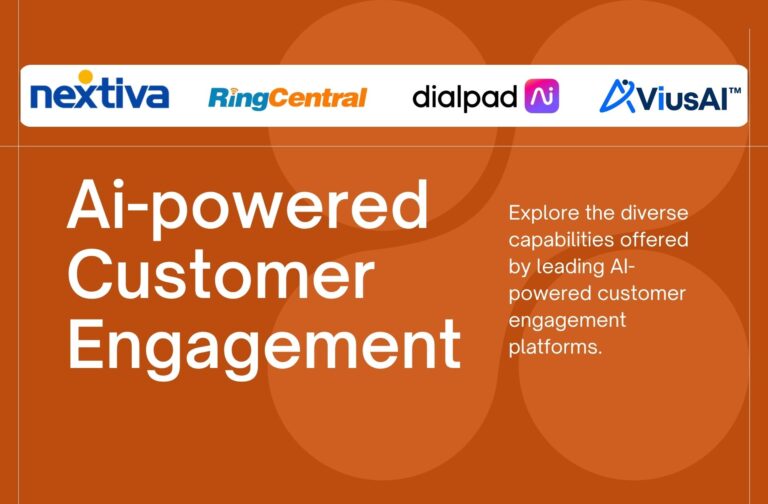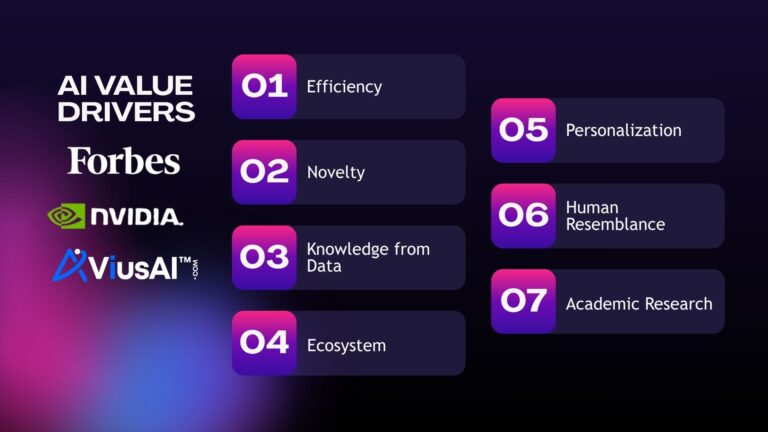Generative AI vs. Agentic AI: Understanding the Key Differences and Transformative Potential.
Artificial intelligence (AI) has made impressive strides in recent years, revolutionizing how humans interact with technology, create content, and solve problems. Among the most transformative subfields of AI that have emerged recently are generative AI and agentic AI.
Though they are related and sometimes overlapping, they represent distinct approaches and capabilities within the AI landscape. In this blog, we will explore the fundamental differences between generative AI and agentic AI, how each works, their applications, and their implications for enterprises and society.
What is Generative AI?
Generative AI refers to a class of artificial intelligence systems that create new content – such as text, images, audio, video, software code, and more – based on patterns learned from extensive training data. These systems use deep learning models that digest large corpora of raw data and generate outputs that statistically align with the learned structure and style of that data. For example, a generative AI trained on vast amounts of written text can produce coherent articles, poetry, or dialogue; another trained on images can generate realistic pictures from prompts.
At the core of generative AI are sophisticated neural network architectures like Large Language Models (LLMs), Generative Adversarial Networks (GANs), and Variational AutoEncoders (VAEs). These models learn by recognizing relationships within data and develop an ability to predict and fabricate plausible new samples resembling the original data distribution.
A defining characteristic of generative AI is that it is inherently reactive and prompt-driven. It requires human input or specific instructions, such as “Write a poem about the ocean,” and produces outputs accordingly. It excels in creativity augmentation – helping humans rapidly produce content that would be tedious or impossible to generate manually at scale.
Examples of popular generative AI systems include ChatGPT, DALL-E, and other models used widely for content creation, design, coding assistance, and even scientific research.
What is Agentic AI?
While generative AI focuses primarily on content creation, agentic AI marks a new wave of intelligent systems designed to act autonomously with purpose and independence. Agentic AI systems consist of multiple AI agents – autonomous entities powered by Large Language Models and complex reasoning – that can perceive their environment, make decisions, adapt to changing conditions in real time, and pursue predefined goals without constant human prompting.
The concept of “agency” in agentic AI means the AI does not just generate content but also take actions, plan multi-step workflows, solve complex problems, and coordinate tasks to achieve higher-level objectives. Rather than awaiting explicit instructions for each step, agentic AI proactively identifies opportunities, learns from outcomes, and executes sequences of activities toward an overarching mission.
In essence, agentic AI operates as a digital autonomous assistant or operator that can manage ongoing projects from start to finish. For example, an agentic AI built for marketing could autonomously produce promotional content, deploy it across channels, analyze engagement metrics, and adjust strategies dynamically – all with minimal human intervention.
Core Differences Between Generative AI and Agentic AI
To clarify the distinctions, consider the following key differences:
| Aspect | Generative AI | Agentic AI |
|---|---|---|
| Primary Function | Content creation and generation | Autonomous decision-making and task execution |
| Operation Mode | Reactive; responds to specific prompts | Proactive; acts independently toward goals |
| Task Complexity | Excels at discrete, single-step tasks | Handles multistep, complex workflows |
| Autonomy Level | Requires human direction for each output | Operates with high independence |
| Outcome Focus | Produces novel content (text, images, code, etc.) | Achieves specific objectives and business outcomes |
| Learning Capability | Learns from training data to generate output | Learns from environment, adapts strategies over time |
| Typical Applications | Content creation, creative augmentation | Workflow automation, complex problem-solving |
How Generative AI Works
Generative AI models are trained on massive datasets containing examples of the content type they aim to generate. During training, the AI encodes the patterns, structures, and statistical relationships within the data into its neural network parameters. This learned representation allows the model to generate new content samples that resemble the training data yet are original.
Well-known architectures used include:
- Large Language Models (LLMs): These models predict sequences of words or tokens to generate coherent text. For instance, GPT models are LLMs extensively trained on diverse text sources.
- Generative Adversarial Networks (GANs): GANs consist of two neural networks—a generator and a discriminator—that compete, with the generator producing new samples and the discriminator evaluating their authenticity. This adversarial process leads to highly realistic image and video generation.
- Variational Autoencoders (VAEs): VAEs encode input data into a compressed latent space and decode it to reconstruct or generate new, similar data samples, useful in various creative AI applications.
Output quality depends heavily on the training data, model size, and tuning. Generative AI requires careful prompt engineering by users to get desired results and often necessitates human review to mitigate errors like hallucinations or bias.
How Agentic AI Works
Agentic AI systems build on generative AI capabilities but incorporate an additional layer of autonomy and decision-making tools. They consist of multiple AI agents working collaboratively or independently, each designed to perform specific sub-tasks such as data gathering, analysis, content generation, scheduling, or customer interaction.
At the heart of agentic AI is a goal-oriented structure. Systems receive high-level objectives and leverage reasoning, planning, and adaptive learning to determine the best course of action. They integrate diverse data sources, monitor real-time feedback, and modify their behavior accordingly.
Agentic AI platforms often use advanced orchestration frameworks to manage AI agents, ensuring complex workflows proceed smoothly and efficiently. This includes:
- Dynamic planning of multi-step tasks
- Autonomous error detection and correction
- Strategic decision-making based on environmental inputs
- Learning from successful and failed attempts to improve future actions
In practice, agentic AI can automate end-to-end enterprise processes such as customer support resolution, marketing campaign management, IT operations, and more – liberating human professionals to focus on higher-value work.
Practical Applications
Generative AI Use Cases
- Automated content creation (articles, blogs, social media posts)
- Creative design (AI-generated art, graphics, music)
- Coding assistance and software prototyping
- Conversational agents like chatbots handling routine limited queries
- Data augmentation for research and training
Agentic AI Use Cases
- Autonomous digital assistants managing entire workflows
- AI-driven customer service agents resolving complex cases without escalation
- Marketing systems autonomously optimizing campaigns based on performance
- IT automation handling system monitoring, alerts, and remediation
- Research agents synthesizing information, conducting analysis, and generating reports independently
Benefits and Challenges
Benefits
- Generative AI accelerates creativity and content production, dramatically reducing human effort in writing, designing, and coding.
- Agentic AI unlocks the potential for true autonomy in AI systems, automating multifaceted business operations and adaptations at scale.
- Together, they enable seamless integration of creative and operational AI functions in enterprises.
Challenges
- Generative AI requires rigorous oversight to prevent misinformation, bias, and unsuitable content generation.
- Agentic AI demands robust safety protocols, goal alignment, and transparency to avoid unintended consequences of autonomous decision-making.
- Both technologies require continuous monitoring and improvement as they evolve in complexity and capability.
The Future of AI: Collaboration Between Generative and Agentic AI
While generative AI and agentic AI serve distinct roles today, their integration will define the future of AI-driven innovation. Agentic AI often uses generative AI as one of its core tools – for instance, generating content that agentic AI then deploys and manages autonomously. This synergy combines the output of generative AI with the executive independence of agentic AI, creating powerful end-to-end intelligent systems.
Enterprises embracing this combined approach will benefit from smoother workflows, enhanced productivity, and adaptive innovation capabilities that transform industries ranging from healthcare and finance to marketing and IT.
Avius AI Agentic AI: Leading the Way in Autonomous AI Solutions
Avius AI Agentic AI represents a cutting-edge example of agentic AI in action, designed to combine advanced autonomy, contextual understanding, and proactive decision-making for enterprise workflows. Unlike traditional AI systems that rely heavily on human instruction for each step, Avius AI Agentic AI operates as a dynamic digital assistant capable of managing complex tasks end-to-end.
At its core, Avius AI integrates multiple specialized AI agents that collaborate seamlessly to analyze real-time data from diverse business systems and communication channels. It deeply understands context across interactions – whether from CRM records, calls, or messaging – enabling it to predict potential issues or opportunities ahead of time. This proactive intelligence allows Avius AI to autonomously initiate personalized actions, such as escalating customer concerns to the most qualified agent or optimizing resource allocation without waiting for manual input.
Avius AI Agentic AI also features continuous learning capabilities supported by persistent memory, allowing it to refine strategies and improve decision-making with each interaction. Its workflow orchestration tools ensure that complex multi-step processes are executed reliably and dynamically adapted to changing conditions. This real-world adaptability and autonomy reduce human workload and unlock new efficiency levels, making Avius AI Agentic AI a prime example of how agentic AI is transforming business operations today.
Conclusion
In summary, generative AI and agentic AI are complementary but fundamentally different AI paradigms. Generative AI specializes in generating novel content driven by user prompts, enhancing human creativity and output speed. In contrast, agentic AI operates autonomously to make decisions, plan, and execute complex tasks independently toward defined goals, revolutionizing enterprise automation and autonomy.
Understanding these distinctions is crucial for organizations aiming to harness AI effectively, ensuring the right tools are deployed for the right problems. As these technologies continue to evolve, they promise to reshape how humans and machines collaborate, amplifying our capabilities and opening new frontiers of possibility.
Sources:







